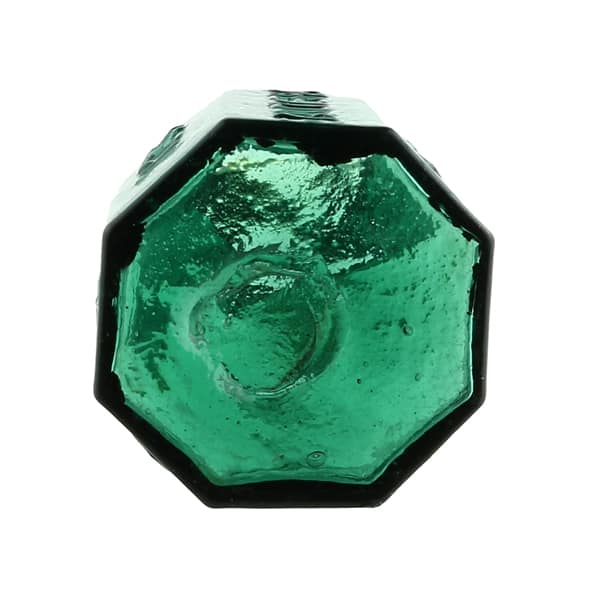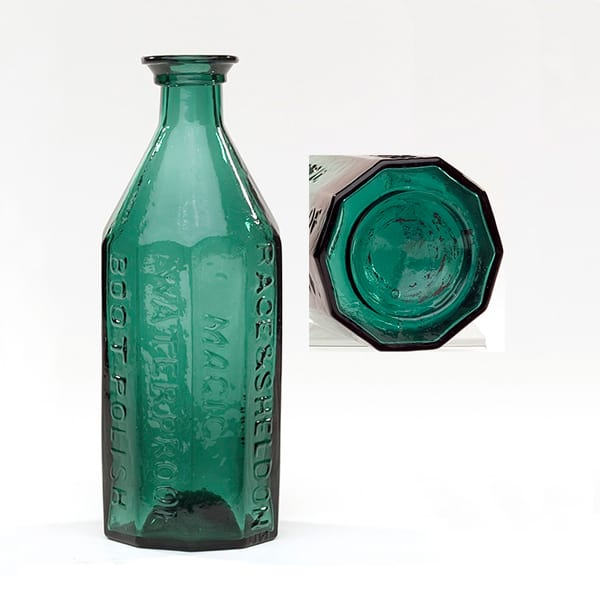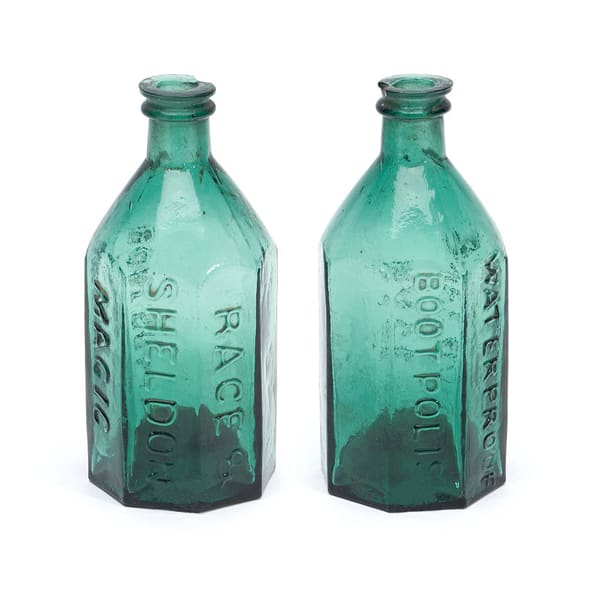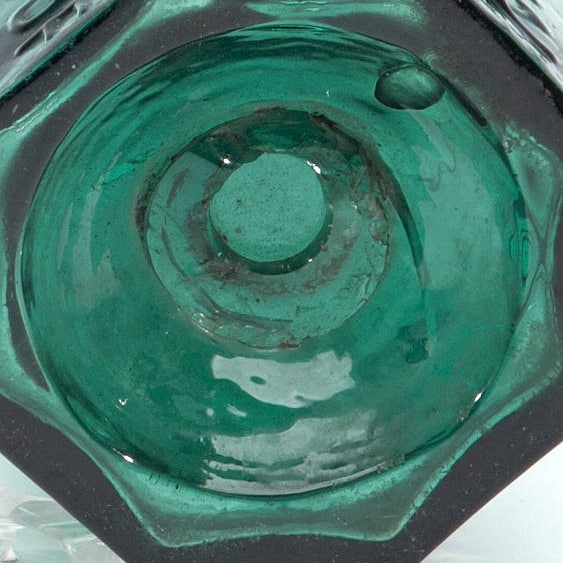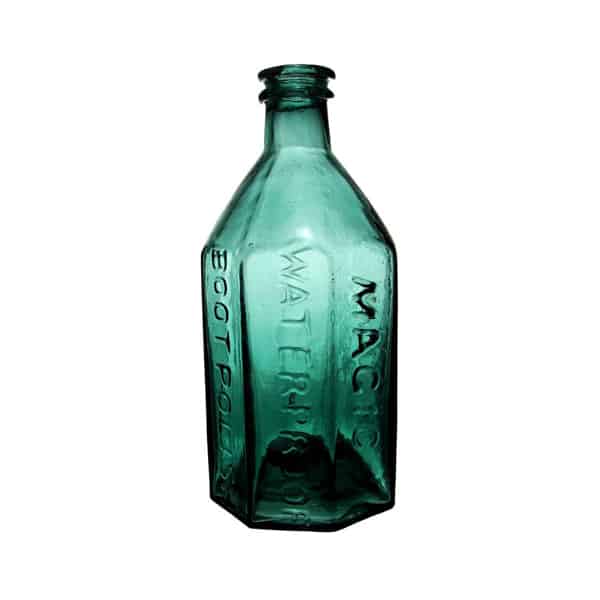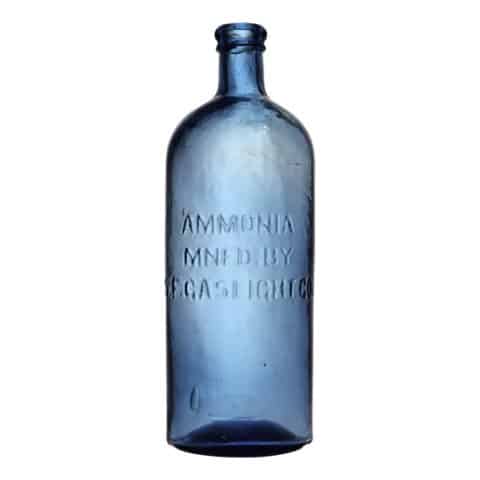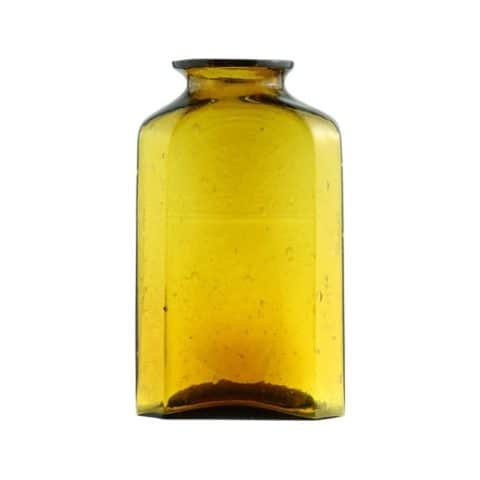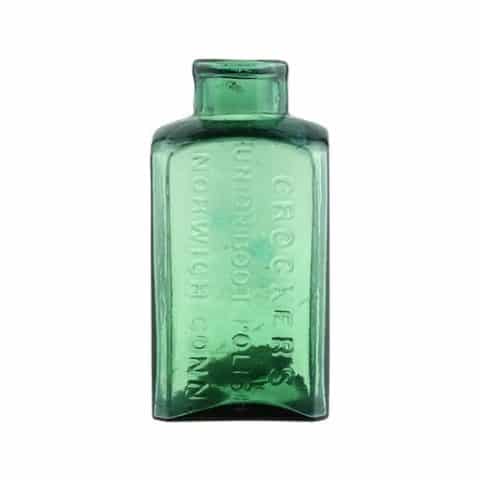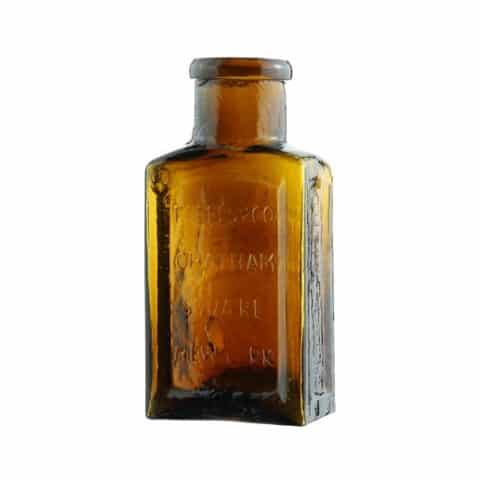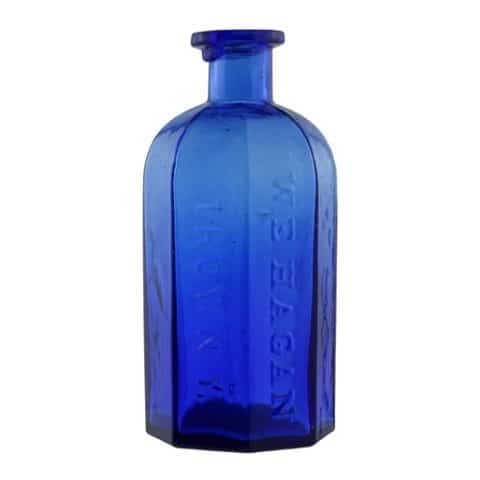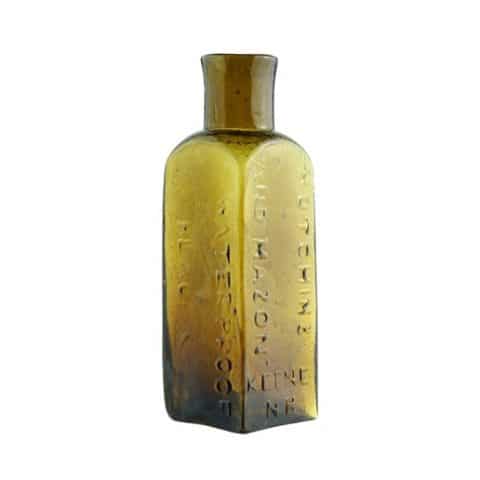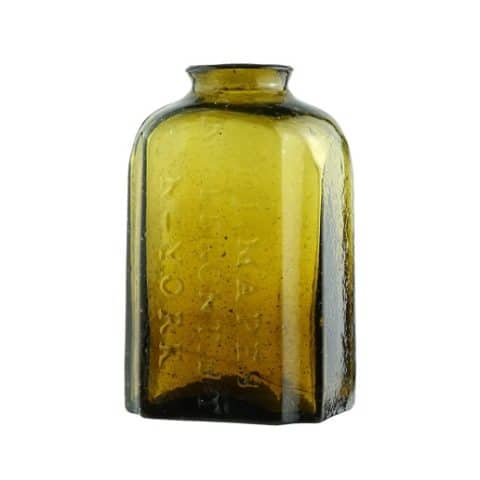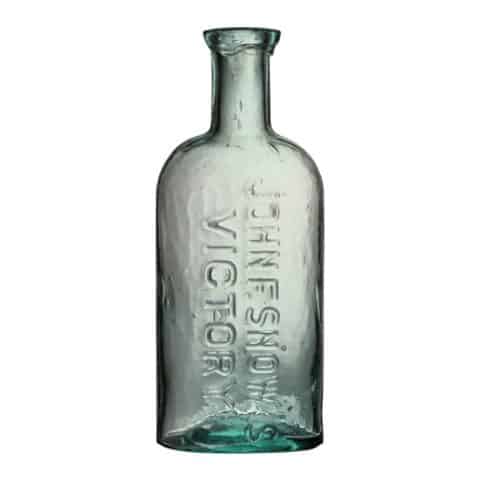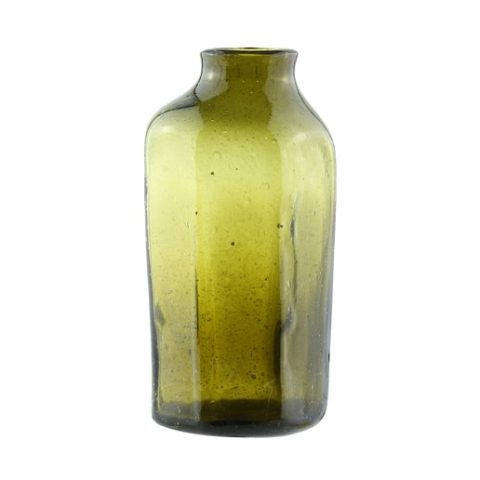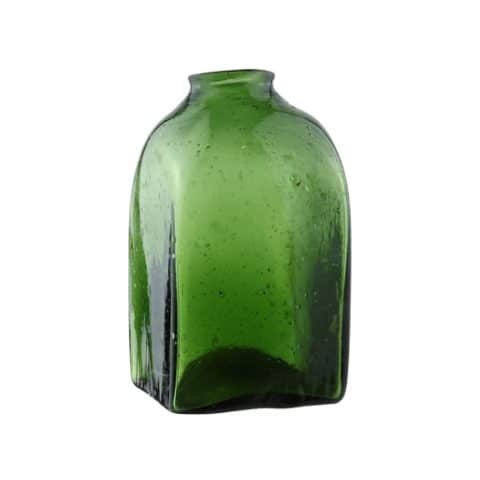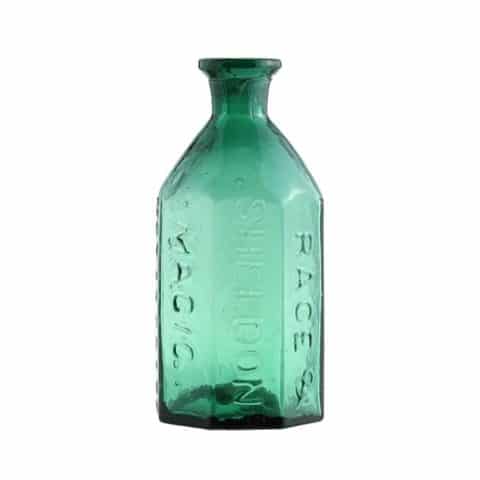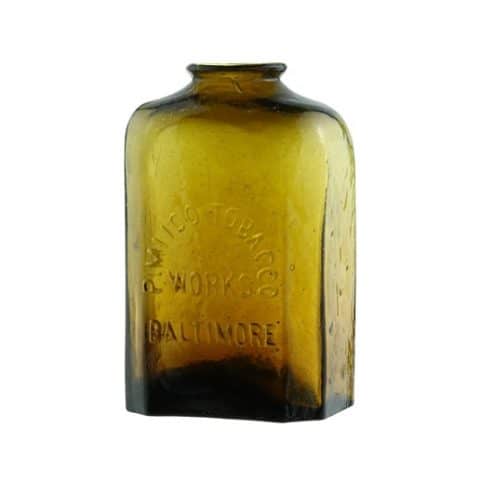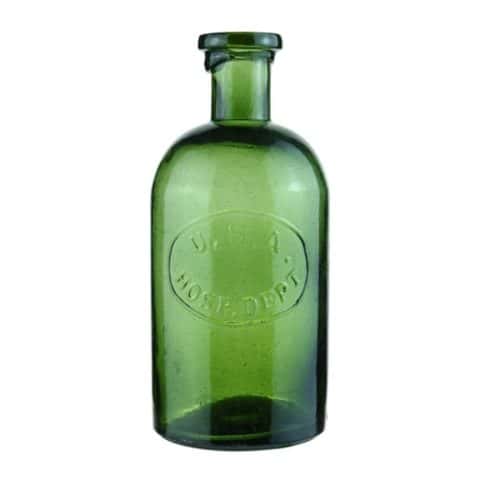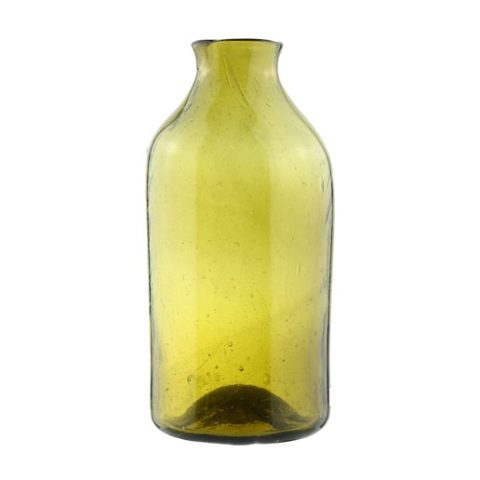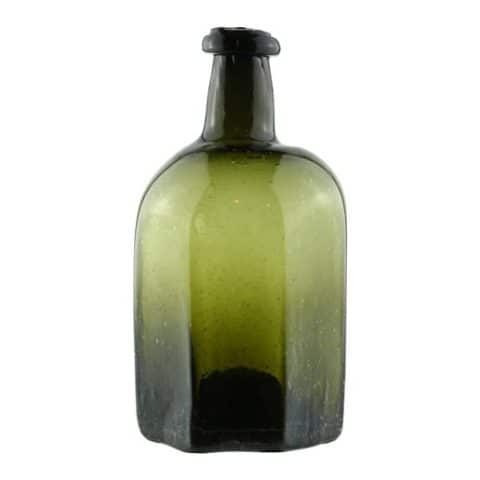Race & Sheldon Magic Waterproof Boot Polish
Race & Sheldon’s
Magic Waterproof Boot Polish
Charles D. Race & Abiel W. Sheldon, Lowell, Massachusetts
Blue Green Octagonal Blacking Bottle
Provenance: Michael George Collection
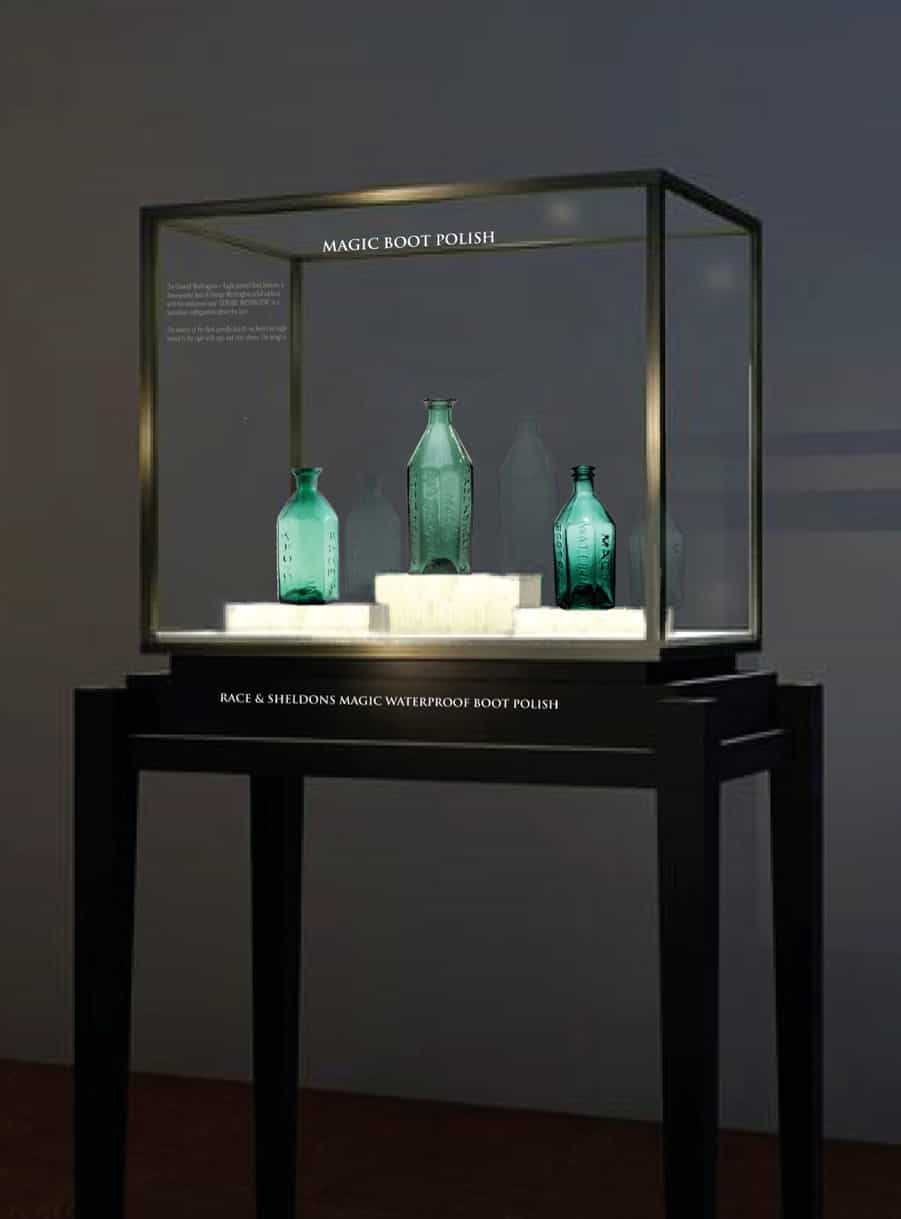
Shoe blacking was probably first manufactured and bottled for commercial sale sometime in the mid 18th century. The earliest mention of its sale in this country comes from William Tweedy of Newport, Rhode Island, who in 1764 advertised in local newspapers “fine liquid shoe blacking much in use for leather bottoms of chairs.” Blacking was any preparation for producing a black coating or finish, as on shoes or stoves. It was usually a substance like a liquid polish or paste. With dirt roads, paths, mud, and rough sidewalks in the mid 19th century, you can only imagine how important waterproof blacking was to keep up your appearance.
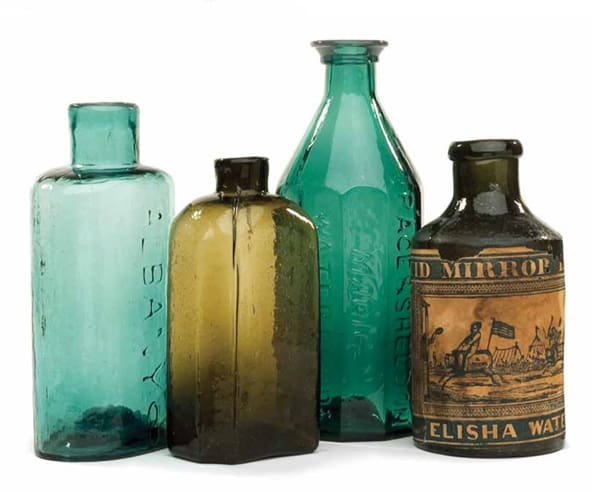
The bottles used to contain liquid blacking were generally cylindrical or square, of slender proportions, and held four to six ounces. They were either free-blown or blown in full-size, two-part molds. Few of them were embossed, most having only a paper label. Just a handful of these labeled examples have survived to this day.
Race & Sheldon’s Magic Waterproof Boot Polish is without a doubt, the most sought-after and cherished of the mid-nineteenth century embossed blacking bottles. The bottles are extremely rare and when found, come in three molds. The pontiled cylindrical bottles are multi-sided and were blown in a rich blue-green glass.
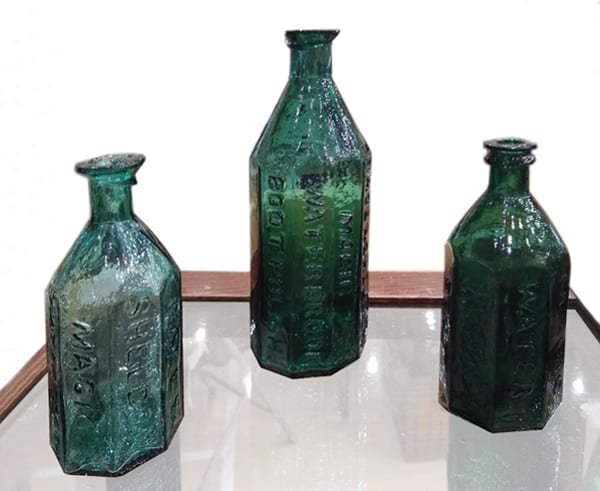
The large size Race & Sheldon’s measures approximately 7-¾” and is cylindrical with ten flat panels leading to a cone type shoulder with an applied wide flared mouth. The bottle is iron pontiled and the color of the glass is a rich blue-green. The large bottle is extremely rare and one of only two known. One is about perfect while the other has a mouth chip. This “about perfect” bottle was found during Boston’s famous “Big Dig” by John Cornelius, and luckily only required soap and water to clean.

Our museum example was purchased from a Glass Works Auction and is a smaller size and about 5-3/8″ tall. The form is cylindrical with eight sides as opposed to ten sides on the larger bottle. The first panel is embossed in a sans serif copy from shoulder to base ‘RACE &’ (1st-panel, the ampersand leans left), ‘SHELDON’s (2nd-panel, the “s” is much smaller and raised), ‘MAGIC’ (3rd-panel italic), ‘WATERPROOF’ (4th-panel, copy touches top panel arch and ends tightly at base), ‘BOOT POLISH’ (5th-panel, copy touches top panel arch and ends tightly at base). The 6th, 7th, and 8th side panels are blank and were probably where a paper label would have been placed. The side panels lead to a cone-type shoulder connected to a short flared neck topped with an applied wide flared mouth. The color of the glass is a rich blue-green. There is an iron pontil scar. The bottle is extremely rare and is in pristine condition. Some examples have an unusual applied double collared mouth.
Race & Sheldon
The proprietors were most likely Charles W. Race and Abiel W. Sheldon who were in business together in the early to mid-1850s in Lowell, Massachusetts. Charles Race was born in Canada on March 17, 1825, to parents Ambrose and Margaret. No siblings are known. Abiel W. Sheldon was born on April 9, 1817, in Wilton, Hillsborough County, New Hampshire. His father was Samuel and his mother Phebe. He was married to Louisa Sheldon with children Edward Everett, William Wetherbee, Harriet Florence, and Mary Louisa Sheldon.
Charles W. Race moved from Canada to Lowell, Massachusetts on March 15, 1845, as noted in State and Federal Naturalization Records. In the late 1840s, Race was listed as a shoemaker working and boarding at Chellis, a local shoe and boot business. By 1850, he was working on his own and listed as a shoemaker in the United States Federal Census. That same year, Abiel W. Sheldon was 35 years old and listed as a manufacturer in Lowell in the 1850 census report. This same relationship with Race as a bootmaker and Sheldon as a manufacturer existed in the early 1850s which most likely dates our bottle from 1850 to 1855 or so. Race became a United States citizen on August 11, 1853. He married again, as his first wife must have died, on January 7 1854 in Lowell, Mass. to Emily Ducharme (26) from Masho, Canada. By 1855, Charles D. Race was listed as a shoemaker at Moore & Cheney, Salathiel Moore & F. Cheney, boots and shoes, 179 Middlesex. Sheldon would move on to be an overseer at the Lawrence Corp. who ran sawmills. Later in the 1870s and 1880s, Sheldon was in the grocery and provisions business. Sheldon died on January 9, 1909, in Lowell. It is not known of the whereabouts of Charles Race after his last shoe in the mid-1850s in Lowell.
Primary Image: Race & Sheldon’s Magic Waterproof Boot Polish bottle imaged on location by Alan DeMaison, FOHBC Virtual Museum Midwest Studio
Support Image: Auction Lot 209: “Race & / Sheldons / Magic / Waterproof / Boot Polish” Blacking Bottle, America, 1840-1860. Octagonal, medium blue green, unusual applied double collared mouth – tubular pontil scar, ht. 5 3/8 inches; (1/2 inch chip from mouth edge, 2 inch “U” shaped pontil scar fissure). Bold embossing and nicely whittled surface. Great form and color. Displays as if perfect. – Norman Heckler Jr. & Sr., Norman C. Heckler & Company, Auction #151
Support Image: Auction Lot 65: “Race & Sheldons / Magic / Waterproof / Boot Polish.” Blacking Bottle, America, 1845 – 1855. Brilliant deep blue green, cylindrical with 10 flat panels, cone type shoulders, applied wide flared mouth – iron pontil scar, ht. 7 3⁄4”, virtually attic mint! Extremely rare, one of only two known in this large size (the other having a mouth chip). This bottle was found during Boston’s famous “Big Dig”, and luckily only required soap and water to clean to attic condition. Sandor Fuss collection. – John Pastor, American Glass Gallery, Auction #9
Support Image: Grouping of blacking bottles, left to right, “Albany” (above the numeral “8” or possibly the infinity symbol) blacking bottle, early blacking or utility bottle, Race & Sheldon’s Magic Waterproof Boot Polish Blacking Bottle, labeled Elisha Waters blacking bottle – John Pastor, American Glass Gallery, Auction #9
Join the FOHBC: The Virtual Museum is a project of the Federation of Historical Bottle Collectors (FOHBC). To become a member.

